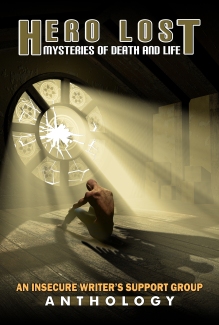Strike a Balance in First Impressions #AuthorToolboxBlogHop #amwriting

The Author Toolbox Blog Hop is “a monthly blog hop on the theme of resources/learning for authors: posts related to the craft of writing, editing, querying, marketing, publishing, blogging tips for authors, reviews of author-related products, anything that an author would find helpful.” Want to jump into the writing tool box? Search #AuthorToolboxBlogHop or to join via blog, click here.
Thank you Raimey!
***

When you meet a new person, what makes you take interest?
- Maybe it’s the passing conversation as you walk, where the topic is something that grabs your attention, or the humor in the way they say it that makes you laugh.
- Maybe they actually saved you from some sad disaster, like toilet paper stuck on your shoe, or a piece of lettuce between your teeth before you go to that next meeting.
- Maybe it’s the way they handle others you work with, scribble notes, ask questions, and do things to let you know you’re in their world, and both worlds matter.
In any case, what I’m trying to say is first impressions are a careful balance of action and conversation. Being somewhere that matters, and revealing something that makes one person stand out to the other.
This is also what I find true about writing.
Recently I’ve come across a great resource called “Writing Irresistible Kidlit: The ultimate Guide to Crafting Fiction for Young Adult and Middle Grade Readers,” by Mary Kole. Kole spells out plenty of tips in how to strike a balance in the introduction.
Action writers should consider the facts and the world building laced through the conflict.
Dialogue writers should consider a push into action and a cut off limit on information.
As invested readers, we want to move forward, with a certain level of intrigue. We want to know what makes a plot different to the character so we do care and turn the page.
One of my favorite analogies Kole made was with a stage: “Know that where you shine, that’s where your audience will look.”
She continues with the stage and states, “Use your spotlight powers to draw attention where you want it and to minimize the reader’s investment in things that don’t really matter.” (54)
Kole says even when the stakes are high they can’t be “generic.” The reader needs to know the world.
I think one of the last things I read that really stuck out about introductions is grounding the reader with every new scene and chapter like:
The next morning I stared out the window at the sun rising over the cold city. I still didn’t have the answer to that one dying question Lisa had asked me. Why do you care so much about someone who doesn’t give two craps about you?
Kole says, “If you confuse us, you lose us.”
I agree. I’m in love with this resource. If you write young adult or middle grade, it’s definitely a must have resource.
Posted on July 17, 2019, in Uncategorized. Bookmark the permalink. 18 Comments.




Thank you! I can pass that resource on to my authors.
I have that book! I switched to an adult genre before I got the chance to read it, but it sounds like it has super relevant advice no matter the genre/age group. Adding to my tbr!
Yes, and the advice is so clean and simple you can’t help but say, that’s so true 🙂
Thanks for the recommendation! I’ve added it to my TBR 🙂
Ronel visiting on Author Toolbox day Let’s Get Visual
You will love it Ronel 😊
I love how-to-write manuals. Not only are the inspiring, they tell it how it is. Thanks for pointing this one out. 🙂
Anna from elements of emaginette
I love your take on this; I think we as writers often forget that we are actually 100% in control! Good characters may take on lives of their own, but we’re in control of the spotlight, so to speak, and so we can craft first impressions for impact!
It does sound good. I agree with her common sense advice.
I’m a Master of Confusion. 😉 Actually, I’ve gotten a lot better over the years, but I still find myself diving into the unimportant details from time to time.
I need to find my flashlight…
That’s funny 🙂
Sounds like a very legit read for any writer. Thanks for sharing.
I got an editorial wrist slap because I wasn’t grounding characters in each chapter. I hadn’t thought about it. As a writer, I knew what was up already and didn’t need to be grounded.
Great tip!
Thanks for sharing this. I have a non-fiction book for MG girls that needs some sprucing up. I bet this will help me dive deeper in telling the stories of role models for girls.
JQ Rose
It really is a fantastic resource Janet
You confuse us, you lose us— golden rule!
You confuse us, you lose us— Golden rule.
Sounds like a great recommendation. Thanks!